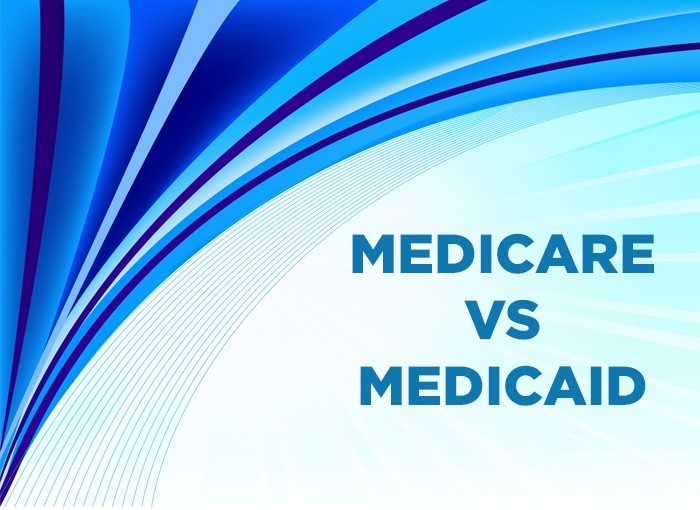What is the difference between Medicare and Medicaid?
Medicare & Medicaid are government-funded healthcare insurance programs that cover medical treatments for thousands of people across America. Both these terms sound quite similar and therefore cause confusion on what exactly they offer. However, as a medical professional, it is crucial to understand the difference. In this article, we’ll be covering some basics on both topics to eradicate any skepticism between the two.
Medicare: Medicare is a federal government-funded healthcare program that is specially designed to serve senior citizens (people above the age of 65 years) for every income group. It also serves young American citizens who are eligible to benefit from Social Security disability benefits or suffering from end-stage renal disease (permanent kidney failure requiring dialysis or a kidney transplant). As it is a federal program, the rules, and requirements of Medicare are similar across America and is run by the Centers for Medicare & Medicaid Services, an agency of the federal government.
Medicaid: Medicaid is another government-funded healthcare program which is run by local and state government under federal guidelines. It is basically a healthcare assistance program designed for low-income groups of all ages. It helps in covering medical treatment costs along with long term custodial care. Additionally, American families that do not qualify for Medicaid but whose children require low-cost care are assisted by the Children’s Health Insurance Program, which has its own certain set of protocols and requirements. As Medicaid is a state-funded healthcare program, its rules and regulation vary in each state.
What are the costs involved in Medicare & Medicaid?
Medicare: The Medicare enrollee has to pay small premiums, which majorly covers all non-hospital charges. Furthermore, deductibles cover the hospital and other charges. There is also coinsurance involved for some medical treatments.
Medicaid: Medicaid is specially designed for low-income group people, therefore, there is no cost involved for the enrollee to pay regarding any medical treatment.
What is the eligibility criteria for Medicare & Medicaid?
Medicare
Medicare and its eligibility criteria is divided into 4 parts: Part A, Part B, Part C, Part D
Part A (Hospitalization Coverage)
Part A of Medicare covers the hospitalization charges but involves a certain premium by the enrollee. However, the enrollee can be eligible for premium-free Part A coverage under certain circumstances: ∙ If the enrollee or their spouse has paid Medicare taxes for 10 years or more.
- If the enrollee is eligible for or receiving retirement benefits from Social Security or the Railroad Retirement Board.
- If the enrollee is entitled to Social Security or Railroad Retirement Board disability benefits for 24 months.
- If the enrollee or their spouses has/had Medicare-covered government employment.
- If the enrollee is a patient requiring kidney dialysis or a kidney transplant.
However, there are still some deductibles and coinsurances that have to be taken care of, by the enrollee.
Part B (Medical Coverage)
Part B of the Medicare covers required medical treatments, services, and equipment (doctor’s office visits, lab work, x-rays, wheelchairs, walkers, outpatient surgeries, disease screenings, flu shots, etc.). Part B of Medicare requires each enrollee to pay a certain premium amount (which is billed every 3 months) to render its benefits.
Part C (Benefit Plans)
Part C of Medicare, which is also called the advantages plan, is offered by Medicare-approved private companies. These plans offer vision, hearing, and dental treatments that are not covered by Part A and Part B of Medicare.
Part D (Prescription Drug Coverage)
As the name suggests, Part D of Medicare takes care of prescription costs involved in the medical treatment. Most of the enrollee invest in this plan only if their advantage plans (Part C) does not cover the prescription cost. Part D involves monthly premium, yearly deductible as well as co-payments for certain prescriptions.
Medicaid
Medicaid has strict eligibility requirements. The program is curated specially to help the low-income groups; most states require not more than a few thousand dollars of liquid assets in order to benefit from the program. Additionally, each state has a certain income limit pre-decided in order to participate in the program. To learn about the state-wise breakdown of eligibility criteria, one can visit Medicaid.gov and BenefitsCheckUp.org. Below are the benefits covered by Medicaid:
∙ Hospitalization
∙ Laboratory services
∙ X-rays
∙ Doctor services
∙ Family planning
∙ Nursing services
∙ Nursing facility services
∙ Home healthcare for people eligible for nursing facility services
∙ Clinic treatment
∙ Pediatric and family nurse practitioner services
∙ Midwife services
Can an enrollee be eligible for both Medicare & Medicaid?
Yes. If the Medicaid enrollee reaches the age of 65, or is disabled, or is suffering from end stage renal disease, they can render benefits of both the plans.



